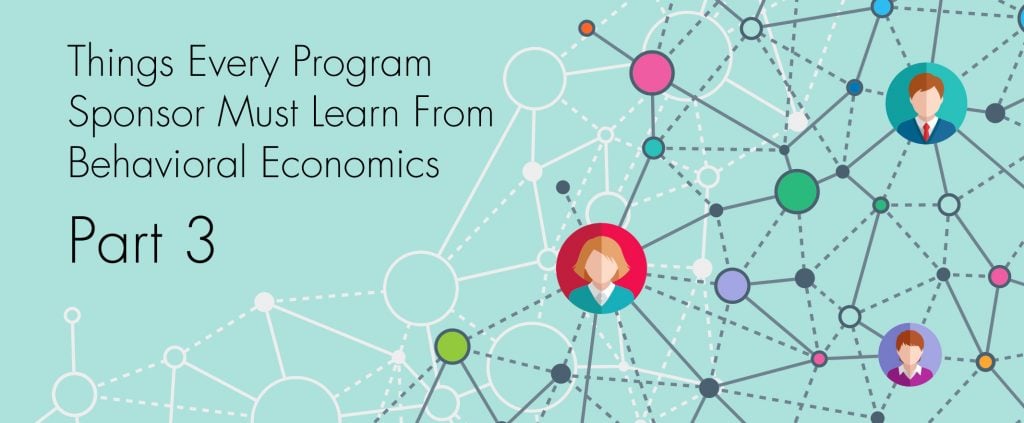In my last write-up, I talked about the dual-purpose “framing” and “segmentation” can play within a communications strategy. I outlined how each can help get your messages understood and acted upon.
Today, I wanted to shift the spotlight to two more essential concepts; the importance of providing a sense of “attainability” within your rule structure, along with the significance “social modeling” can have on employees.
Just as people are more likely to tune out messages that are not relevant to their circumstances, they will also dismiss program goals they deem to be out of reach. Behavioral economics shows us that one-size-fits-all rule structures, the kind that rely on the exact same objectives across the entire employee audience, are more likely to demotivate workers than they are to charge them up.
“Attainability” and the notion of what’s possible
Behavioral economists talk about how you can gain an individual’s attention, capture their energy and motivate them to pursue a task. While some notables differ around the margins, most agree that people respond best to goals within their reach.
When devising a plan, it’s important that your opening goal thresholds are seen as attainable. Companies that understand behavioral economics will structure achievement hurdles that can be delivered in an incremental manner. Presenting objectives one step at a time also presents the notion that improvement is within one’s grasp.
Goals that are viewed as achievable are not only more motivating for employees; they also make everyone feel that their contributions are more aligned with the organization’s purpose. When goals are attainable, employees are more likely to buy into how their individual efforts support their company’s mission.
Planners that practice incremental goal setting can expect better outcomes. A stair-step approach to setting and re-setting objectives makes each seem more doable. One of behavioral economics’ pillars is built around goal gradient hypothesis, a belief that people accelerate their efforts toward any aim when they get closer to reaching it.
That’s not to say you should settle for “low return” incentives. On the contrary, as preceding performance levels are realized, new ones can be communicated. Goals should be reset higher but still within the parameters of being “attainable.” As people graduate from one threshold and advance to the next, sponsors gain performance momentum within their entire workforce.
How social recognition reinforces attainability
Behavioral economists know that people don’t evaluate offers in a bubble. They do so within a comparative framework. Social cognitive theory states that observing the conduct of others reinforces individual knowledge. People will always be evaluating what you put in front of them. In addition to figuring out just how the program’s desired outcomes relate to them personally, they will want to see how others within their same peer group have responded. This is where social recognition can have such a huge impact for your program.
Remember, framing can have a big influence on a rule structure and can influence how communications speak directly to an employee’s day-to-day experiences. Social recognition complements all of that. Fundamentally, it humanizes the narrative. For example, within your employee recognition program think about the power of sharing the story of how one employee accomplished their goals. Real life examples are important. They illustrate (and reaffirm) the very notion of attainability. They reinforce that success is indeed within reach because others within their peer group have achieved it. Social recognition cements the idea that success is closer than most employees think. It fits right into what behavioral economics teaches us.



